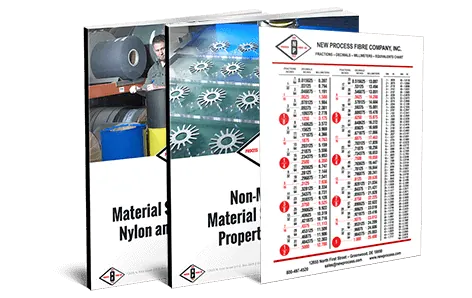High-density polyethylene (HDPE) is a crystalline thermoplastic derived from petroleum. Due to their durability and ease of fabrication, high-density polyethylene raw materials fulfill a broad range of industrial and commercial applications where metal or less stable thermoplastics are unsuitable. It’s also an affordable and eco-friendly type of plastic, especially at industrial-scale levels of production.
Benefits of HDPE
High-density polyethylene offers numerous benefits for applications across industries:
- Resistance to corrosion, abrasion, and impacts
- High tensile strength and strength-to-density ratio
- Extreme heat and cold tolerance
- Recyclability
- Low porosity
- Cost-effectiveness
- High melting point
- Malleability
- Low coefficient of friction
High-density polyethylene largely retains its rigidity before reaching its melting point. This provides an ideal balance between dimensional stability and malleability, so high-density polyethylene manufacturers can use HDPE for more complex designs.
Common Applications for HDPE
HDPE is a sturdy, versatile material that is ideal for manufacturing flat stamping, washers, shims, tags, custom shapes, supporting fastening apparatuses and distributing pressure joints, components that hold screws and bolts in place, and more. These components are essential for the construction, automotive, marine, food processing, packaging and other industries.
Custom HDPE Material Solutions From New Process Fibre
HDPE is a sturdy, versatile material that is ideal for manufacturing flat stamping, washers, shims, tags, custom shapes, and more.
New Process Fibre specializes in complete stamping and die-cutting services for HDPE. We also produce sheets, rolls, and coils of high-quality plastics in standard and custom colors at high speeds. We can provide HDPE in custom thicknesses, widths, and colors to meet your project specifications. We are an ISO 9001:2015-certified manufacturer.
Customize your HDPE washers for your specific application. Contact us today to learn more about our variety of plastic fabrication and stamping services, or request a quote for your next project.
FAQs
What’s the difference between HDPE and LDPE?
High-density polyethylene is just one type of polyethylene. Low-density polyethylene (LDPE) is lighter and more flexible.
During fabrication, HDPE’s polymer chains endure minimal branching. This keeps the polymer’s linear molecules closely knit together. The chains crystallize in a tight formation, which gives HDPE its rigid and relatively dense structure. It can hold a firm shape, even under pressure.
Conversely, the polymer chains of LDPE undergo significant branching and spreading. The polymer chains are more diffuse and scattered, giving them much less structure. This makes the material lighter, more flexible, and more susceptible to damage.
As such, HDPE is preferred for most manufacturing and packaging purposes. It can form reliable, structured products such as construction materials, chemical processing components, and other applications that involve high mechanical stress and pressure.
Low-density polyethylene is used to produce items with lower strength and temperature requirements. It’s often suitable for sealing caps, saucers, lids, paper processing, and certain marine equipment.
What is the melting point of HDPE?
HDPE’s melting point is 135 °C.
What is the density of HDPE?
The density of HDPE ranges between 0.93 and 0.97 g/cm3 (or 970 kg/m3).
What is the structure of HDPE?
HDPE has a linear structure with the general chemical formula of (C2H4)n.


